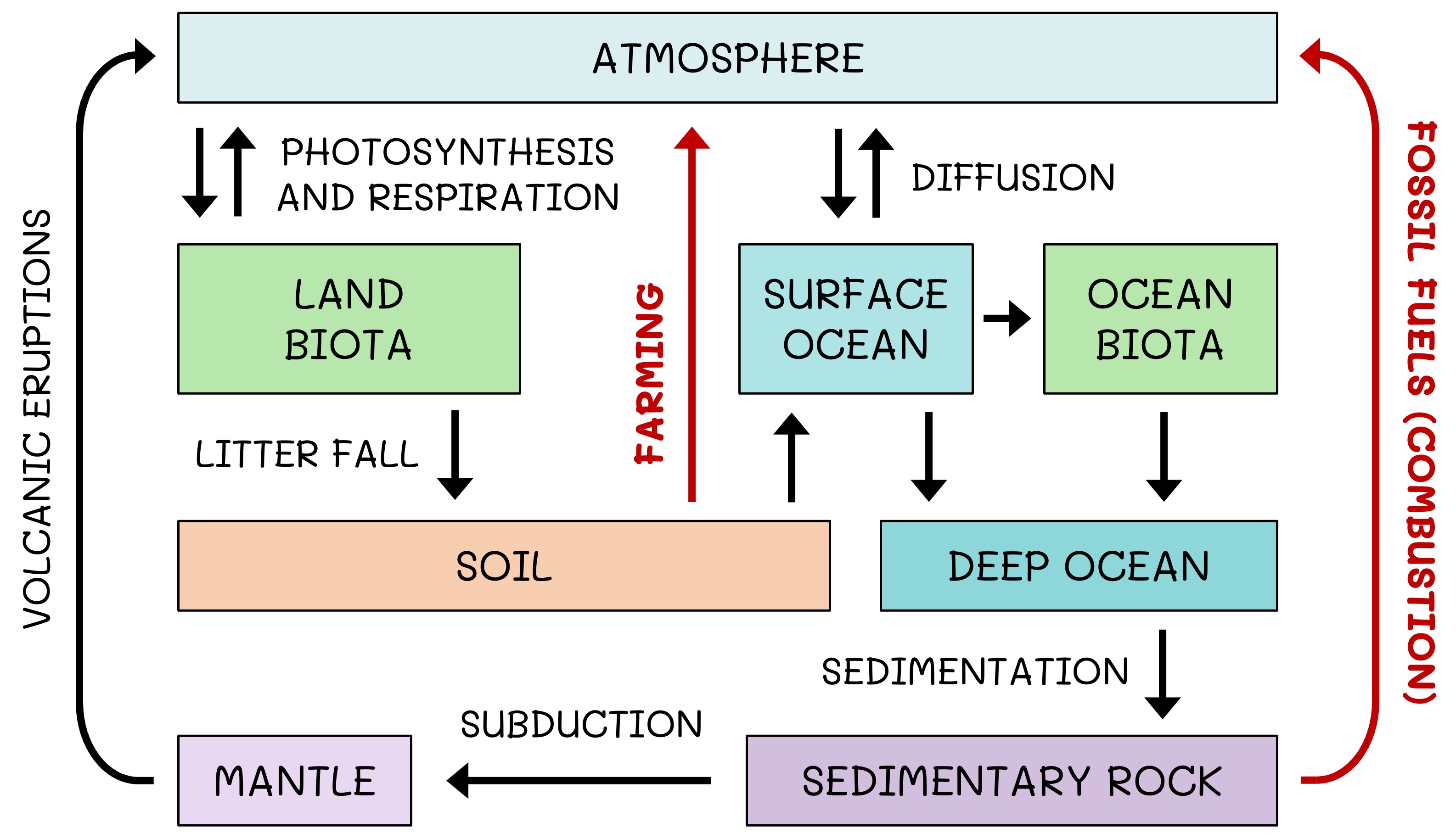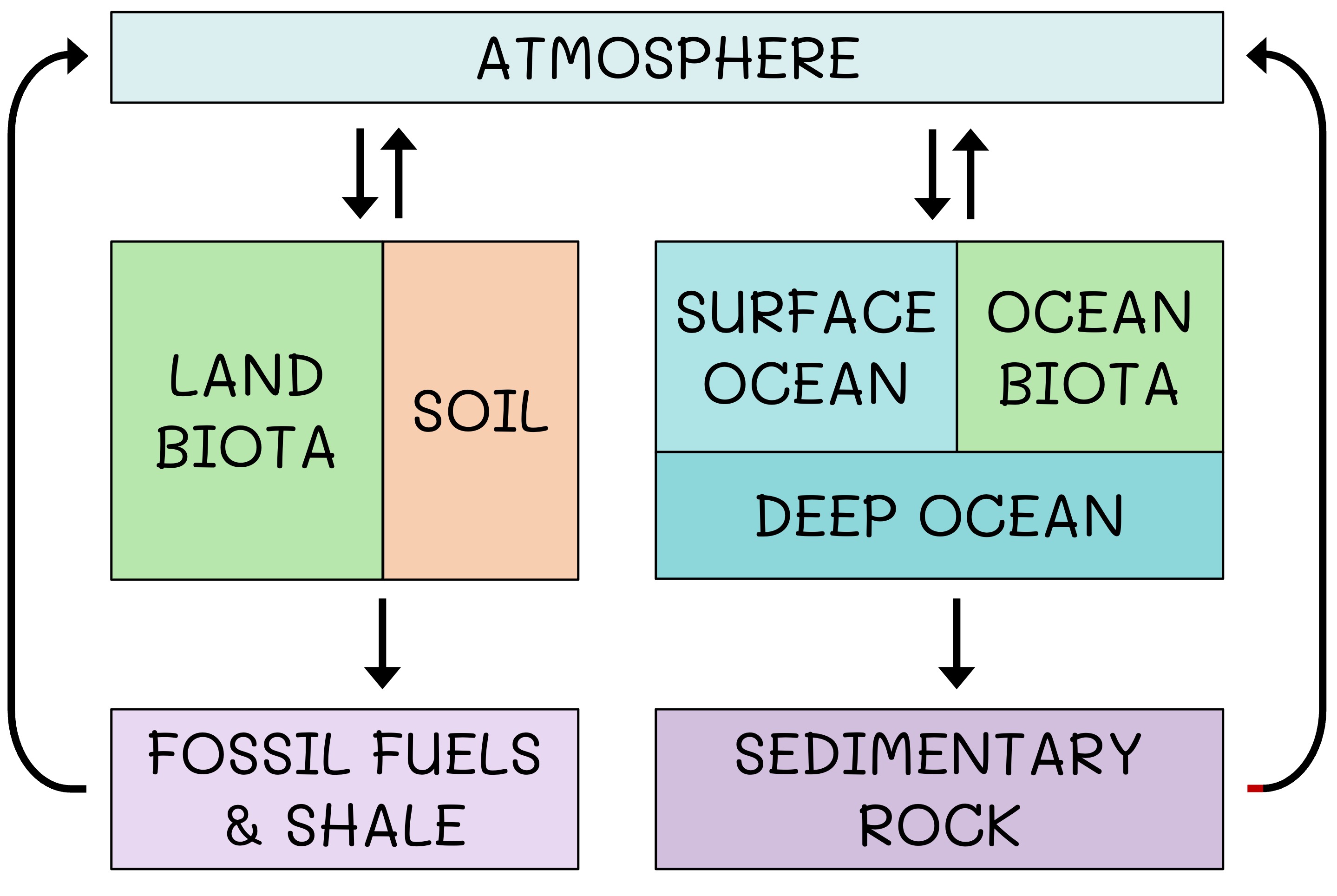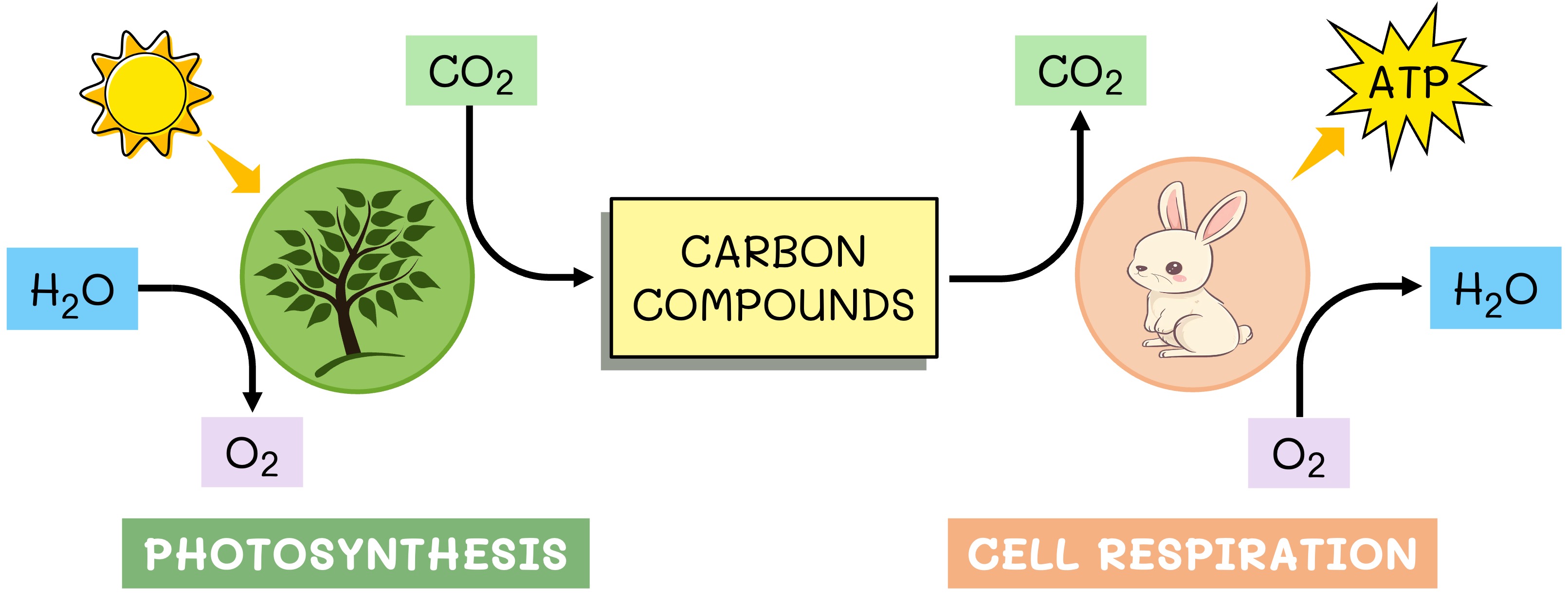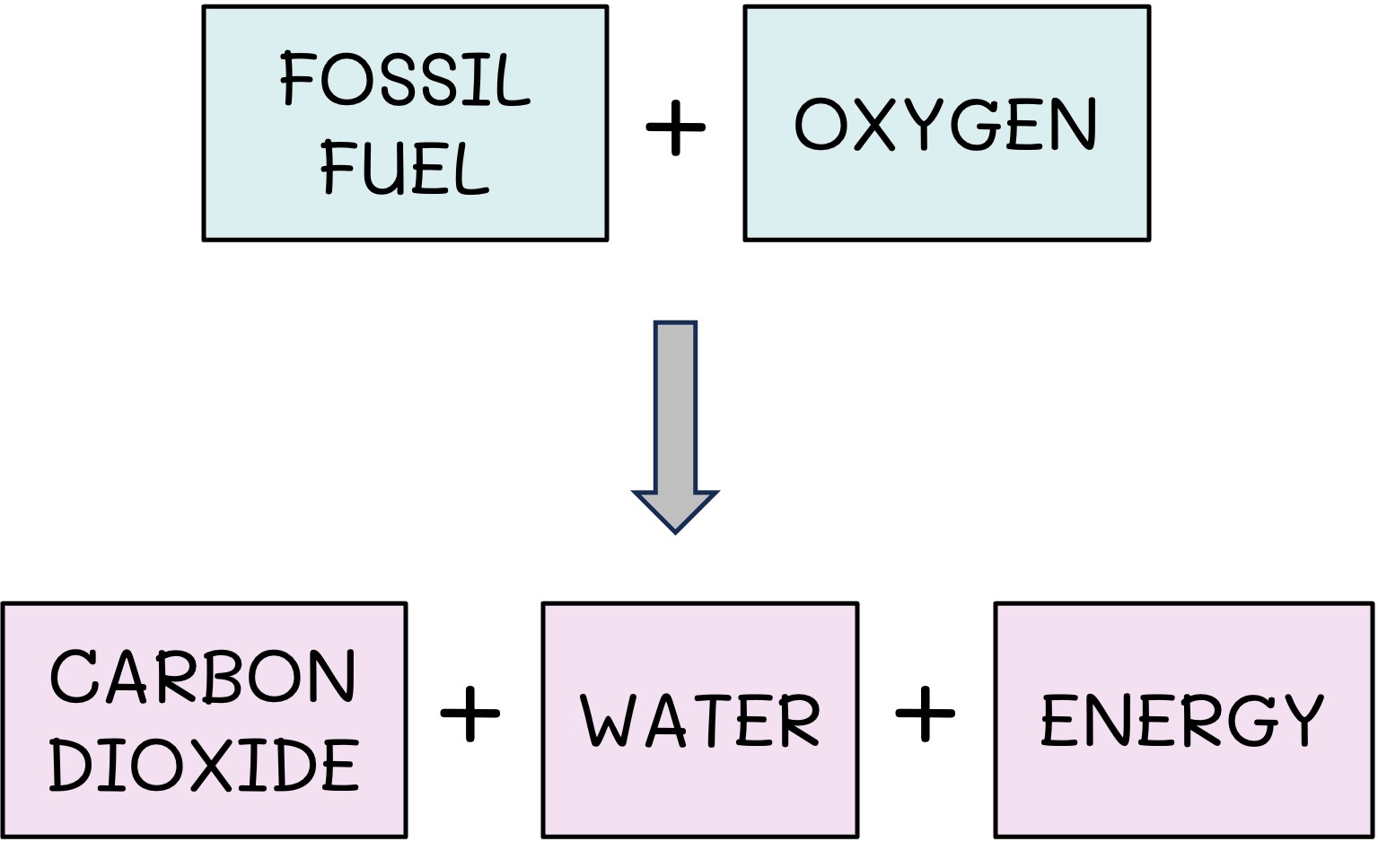

Carbon Fluxes
The Earth is composed of four spheres that act as both carbon sinks (stores carbon) and carbon sources (releases carbon)
-
These are the lithosphere (earth crust), hydrosphere (oceans), atmosphere (air) and biosphere (organisms)
The process of carbon transfer between a carbon source and a carbon sink is known as a carbon flux
-
Global carbon fluxes are very large and are measured in gigatonnes (1 gigatonne of carbon = 1 billion metric tonnes)
There are many different carbon fluxes within an ecosystem – such as photosynthesis, respiration and combustion
-
Natural phenomena can trigger a carbon flux (volcanic eruptions and forest fires both release carbon compounds)
-
Climate conditions can also cause a change in flux (photosynthesis is higher during summer, while ocean temperatures determine CO2 dissolution)
Global Carbon Fluxes


Biotic Conversions
Two of the main carbon fluxes within ecosystems are photosynthesis and cell respiration
-
Photoautotrophs take up carbon dioxide when they photosynthesise and convert it into carbon compounds (which are stored in their tissues as biomass)
-
Most autotrophs and heterotrophs will release carbon dioxide when they break down biomass via aerobic respiration (to produce ATP)
Levels of atmospheric carbon dioxide will be influenced by the relative rates of photosynthesis and respiration
-
If net photosynthetic rates are higher than respiration rates, atmospheric carbon dioxide levels should drop
-
If net respiration rates are higher than photosynthetic rates, atmospheric carbon dioxide levels should increase
Aerobic respiration is dependent on oxygen availability (produced by photosynthesis), while photosynthesis is dependent on carbon dioxide levels (produced by respiration)
-
In autotrophs, the uptake of carbon dioxide during photosynthesis may at times be balanced by its production during aerobic respiration
-
This is known as the compensation point, at which the net carbon dioxide assimilation is zero (intake = output)
Photosynthesis vs Respiration


Combustion
Carbon compounds may undergo combustion in the presence of oxygen to produce carbon dioxide and water
-
The exergonic combustion of biomass is called aerobic respiration and produces chemical energy (ATP)
-
Combustion reactions can also occur naturally within the environment as a consequence of lightning strikes
Humans are using the combustion of fossil fuels to produce energy for various uses (electricity, etc.)
-
Fossil fuels form as a consequence of incomplete decomposition of biomass (due to anoxic or acidic conditions)
-
When the biomass is compressed under sediment, heat and pressure force out any impurities and remove any moisture
-
Peat and coal are formed from terrestrial organisms in waterlogged soils, while oil and natural gas are formed from marine organisms
The combustion of fossil fuels is substantially increasing the concentration of carbon dioxide within the atmosphere
-
This anthropomorphic carbon flux is leading to ecological disturbances such as adverse weather conditions and climate change
Combustion Reaction






